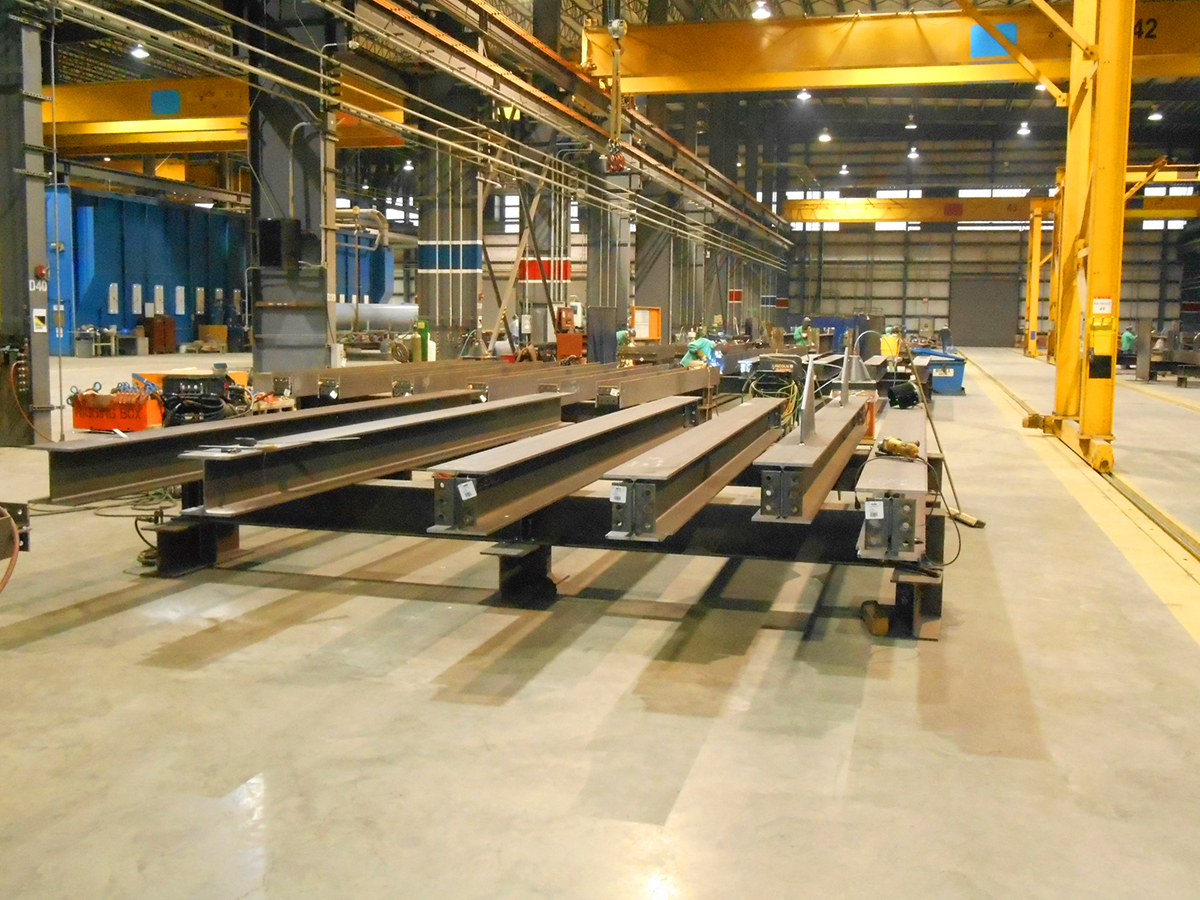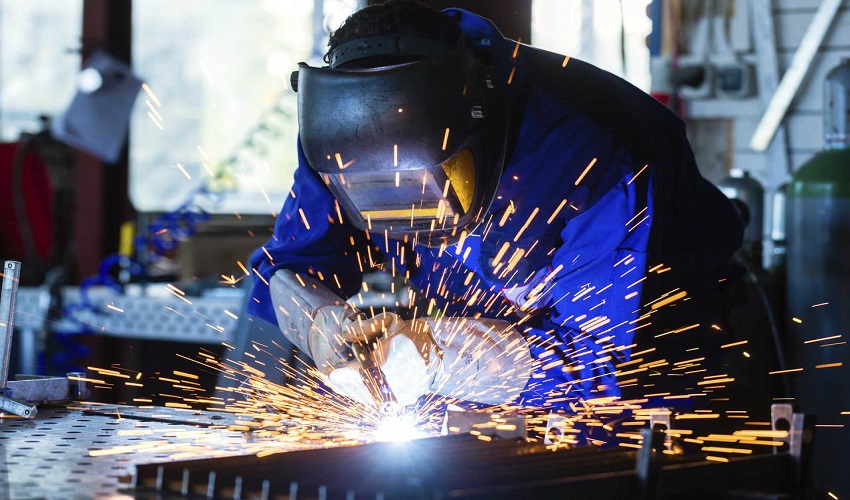Comprehensive Analysis of Cutting-Edge Techniques in Steel Manufacture Industry
As the steel fabrication market proceeds to progress, the assimilation of cutting-edge techniques has actually become necessary for remaining affordable and fulfilling the demands of modern manufacturing standards. In this vibrant market where modern technology plays a pivotal function, comprehending the subtleties of these cutting-edge techniques is not simply a choice but a necessity for those looking to forge ahead in the ever-evolving world of steel construction.
Laser Cutting Innovations
In the world of steel construction, laser cutting developments have reinvented the precision and effectiveness of metal shaping processes. By utilizing the power of concentrated laser beams, manufacturers can currently attain unparalleled levels of precision when puncturing different sorts of metals. This modern technology makes it possible for complex styles to be performed with marginal product wastefulness, making it a cost-effective remedy for sectors requiring high precision parts.
Among the vital advantages of laser cutting is its capacity to manage a large range of products, consisting of stainless-steel, light weight aluminum, and carbon steel, with simplicity. The process generates clean, burr-free edges, removing the need for added completing steps. The non-contact nature of laser reducing decreases the threat of material contamination, resulting in greater quality end items.
Moreover, laser cutting equipments can be configured to make swift, specific cuts, dramatically minimizing manufacturing time compared to typical cutting techniques. This rate and accuracy make laser reducing particularly appropriate for mass manufacturing settings where effectiveness is extremely important. As technology continues to breakthrough, laser cutting is poised to play a progressively essential role in the steel construction sector.

CNC Machining Innovations
The development of CNC machining modern technologies has actually introduced a new age of accuracy and performance in the steel manufacture sector. Computer System Numerical Control (CNC) machines have reinvented steel manufacture by supplying unparalleled accuracy and repeatability in the manufacturing process. steel fabricators melbourne. One of the crucial advancements in CNC machining is the assimilation of innovative software program systems that make it possible for real-time surveillance and changes, bring about improved performance and quality assurance
In addition, the growth of multi-axis CNC makers has actually permitted the construction of complicated steel elements with elaborate designs that were previously testing to generate. These machines can execute a variety of machining procedures, including milling, drilling, turning, and grinding, all with high degrees of accuracy.
In addition, the unification of automation and robotics in CNC machining has structured manufacturing procedures, decreased lead times, and decreased the margin of mistake. This combination of advanced technologies not just enhances efficiency yet additionally makes sure constant quality throughout all fabricated steel parts. In conclusion, CNC machining innovations proceed to drive improvements in the steel fabrication sector, setting brand-new requirements for precision and performance.
Automated Welding Technologies
Automated welding innovations have actually reinvented the steel fabrication sector, improving performance and precision in the welding procedure. These innovative technologies use computer-controlled systems to automate the welding procedure, resulting in greater productivity degrees and improved weld top quality. One of the crucial advantages of automated welding is the capability to carry out complex welds with constant precision, decreasing the chance of errors and remodel.
Robot welding systems are at the leading edge of automated welding innovations, offering unequaled speed and precision. These systems can manage a wide variety of welding jobs, from simple to elaborate, with convenience (metal fabrication melbourne). By using sophisticated sensing units and software, robotic welders can adapt to variants in product and joint geometry, ensuring an uniform and reputable weld
Additionally, automated welding innovations improve work environment safety and security by minimizing the exposure of human welders to dangerous fumes and intense warmth. As the steel construction market proceeds to advance, incorporating automated welding technologies will be vital for business seeking to remain competitive and satisfy the expanding needs for high-grade bonded items.
Robotics Assimilation in Manufacture
Making use of robot systems in manufacture processes has become a pivotal technique for enhancing efficiency and accuracy in modern-day production atmospheres. Robotics combination in steel construction uses a myriad of advantages, including enhanced productivity, boosted high quality control, and enhanced precaution. These sophisticated robotic systems are equipped with innovative sensing units and programs capabilities, allowing them to carry out complex tasks with a high degree of precision and repeatability.
One of the key benefits of robotics combination in steel fabrication is the ability to automate recurring jobs, such as material handling, cutting, welding, and setting up procedures. This not only quickens production cycles but additionally minimizes the threat of human error, leading to greater overall item high quality. Additionally, robotics can operate 24/7, significantly enhancing production result and meeting limited project target dates.

3D Printing in Steel Manufacturing
Having reinvented the steel manufacture industry with robotics combination, the expanding exploration of 3D printing in steel manufacturing is poised to additional breakthrough the world of modern manufacturing methods. 3D printing, additionally called additive production, offers unmatched style flexibility and intricacy, making it possible for the production of detailed steel frameworks that were formerly unattainable through traditional manufacturing methods. By utilizing computer-aided style (CAD) software application, makers can specifically control the layer-by-layer deposition of steel material, resulting in parts with enhanced performances and geometries.
One of the essential advantages of 3D printing in steel manufacturing is its ability to lower material waste considerably. Unlike subtractive manufacturing processes where excess product is cut away, 3D printing just utilizes the needed amount of steel required for the last component. This performance not only have a peek here results in cost financial savings yet my response additionally lines up with sustainable manufacturing techniques by lessening environmental impact.
In addition, 3D printing makes it possible for fast prototyping and personalization, enabling the manufacturing of little batches of intricate steel parts with short lead times. As the innovation continues to mature and become more easily accessible, its assimilation into mainstream steel construction procedures is anticipated to drive innovation and efficiency across the sector.
Conclusion
Finally, the steel manufacture sector has seen significant developments in methods such as laser cutting, CNC machining, automated welding, robotics combination, and 3D printing. These sophisticated modern technologies have actually revolutionized the way steel items are made, bring about increased accuracy, performance, and cost-effectiveness. Proceeded financial investment in these ingenious methods is vital for the market to stay competitive and meet the needs of modern-day production processes.
As the steel construction industry proceeds to advance, the assimilation of innovative methods has become crucial for staying affordable and fulfilling the demands of modern manufacturing criteria.One of the crucial advantages of laser cutting is its ability to take care of a vast variety of materials, consisting of stainless steel, aluminum, and carbon steel, with ease.Automated welding modern technologies have revolutionized the steel manufacture market, enhancing performance and precision in the welding procedure.Having actually revolutionized the steel manufacture market through robotics combination, the growing expedition of 3D printing in steel manufacturing is positioned to more development the realm of modern-day manufacturing strategies.In conclusion, the steel manufacture industry has actually seen significant innovations anonymous in techniques such as laser cutting, CNC machining, automated welding, robotics integration, and 3D printing.